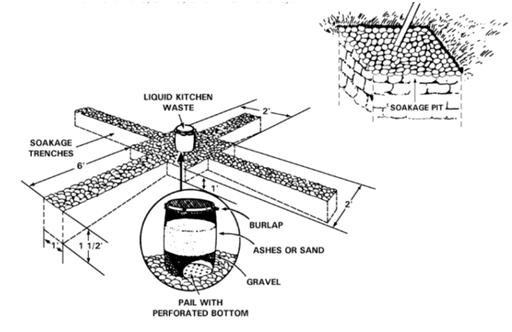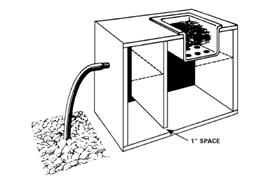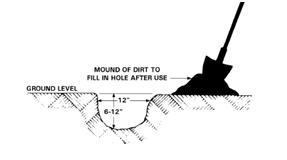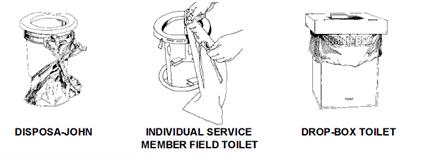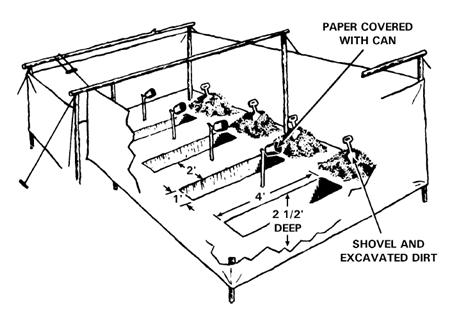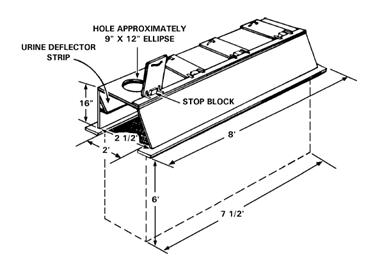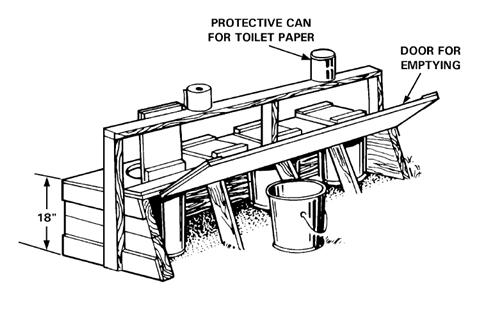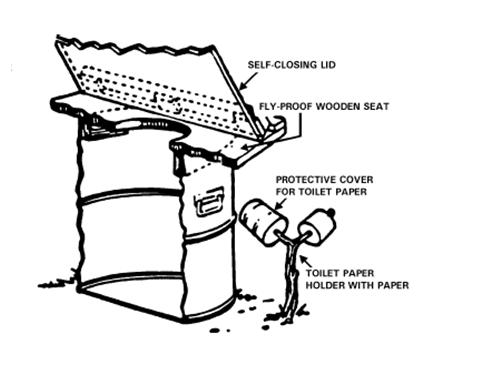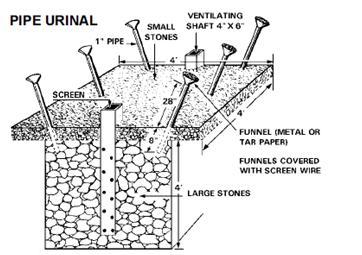How to Build Emergency Camp Toilets
Contents
How To Build Emergency Camp Toilets
Short Description
- Problem: Preventing disease in refugee camps, third world countries, and for highly mobile populations
- Idea: Provide temporary sanitation facilities
- Difficulty: easy to medium
- Price Range: free to US $50 (depending on scope)
- Material Needed: depends on application
- Geographic Area: global
- Competencies: none required
- How Many people? 1 to 5 people
- How Long does it take? depends on application
Description
STEP 1: Select site of construction.
• Garbage and soakage pits should be at least 30 meters from food service.
• Latrine should be as far as possible from food service (100 meters or more is best).
• Latrine should be located on level ground. Never uphill from the campsite or water supplies.
STEP 2: Construct disposal facility.
STEP 3: Inspect daily to make sure that the following is done:
• Waste is collected and transported to an approved disposal facility.
• Straddle trench latrines and garbage pits are covered with dirt daily.
• Pail latrines are emptied and cleaned daily.
• Burn-out latrine containers are rotated and contents burned daily.
• Facilities (not the contents) are sprayed with insecticide for fly control when other control techniques fail.
STEP 4: Close improvised latrines and garbage pits when filled to within 1 foot of the ground surface. Have chemical toilet contents removed daily.
Close out by:
• Spraying with residual insecticide.
• Packing earth in successive 3-inch layers until mounded 1 foot above ground level. Spraying again with residual insecticide.
• Posting a sign stating, “Closed latrine/garbage pit and date”.
Difficulties
Success Story
Plans, Illustrations, Posters
NOTE: Measurements in diagrams are in US standard units (Feet and Inches).
• Garbage pit: Used to prevent accumulation of garbage in the campsite area.
NOTE
Garbage and rubbish should be transported to an approved landfill or must be buried or burned. If buried for short stays, cover daily. For longer periods, garbage and rubbish may have to be burned; however, the ashes should be buried.
• Soakage pit/trench: Used to prevent accumulation of liquid waste (water from showers, sinks, and field kitchens).
• Grease trap: Used with both soakage pit and trench to prevent clogging of soil.
• Cat-hole latrine: Used only on the move (if individual waste collection bags are not available) and covered immediately after use.
• Chemical toilets: Used as the standard field latrine.
• Straddle trench latrine: Used on short bivouacs. Two trenches per 100 males and three trenches per 100 females.
• Deep pit latrine: Used for longer periods of time and in built-up areas. NOTE If ground is too hard for digging, or if the water table is too high, use a pail latrine or a burn-out latrine.
• Pail latrine: Use where water table is too close to the surface of the ground for digging a deep pit latrine.
• Burn-out latrine: Use where water table is too close to the surface of the ground for digging a pit latrine, or stay is for an extended period.
• Urinals: For male latrines, construct one of the following urinals: trough urinal, pipe urinal, or urinoil.
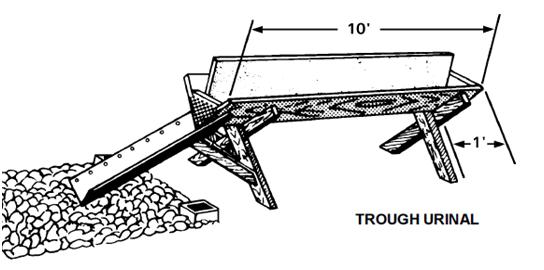
Contacts
Reference
FM 21-10
MCRP 4-11.1D
FIELD HYGIENE AND SANITATION
Approved for public release; distribution is unlimited.
You can find the original of this article at [1]
Contributions
This Article was initiated by ~~~~ Notice: The author accepts no responsibility for the safety of a construction or the correctness of the article
Links
Related articles
Categories
- Crisis Management
- Food Poisoning and its Prevention
- Health
- Heating
- Hygiene
- Pollution
- Prevention
- Sanitation
- Run-Off
- Transportation
- Waste
- Water
- Water purification
- Medium
- Easy to Medium
- Easy
- Global Technology
- Local Technology
- Global
- Rural Environment
- Less than 50 US$
- One Person and more
- More than 5 Persons
- One Person
- Up to 5 Persons
- Household
- Village
- Neighbourhood
- School
- Application
- Principles
- Administration
- Requested translation

